Summer Stories
From The Kenyon Review - June 10, 2016
"Knowing you have something good to read before bed is among the most pleasurable of sensations." — Vladimir Nabokov
"If the book we’re reading doesn’t wake us up with a blow to the head, what are we reading for?" — Franz Kafka
What more is there to say about reading that Nabokov and Kafka can’t say between them? Here are our summer recommendations:
David Lynn '76, Editor
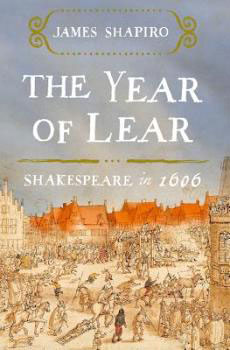 The Year of Lear: Shakespeare in 1606, by James Shapiro. For those of us raised in an era when Shakespeare was typically taught as a genius about whom nothing much was known — or necessary to know — this brilliant book is a rich, wondrous introduction to the vibrant London of that moment. A recently crowned King from Scotland; the scourge of plague; a Gunpowder Plot that nearly decapitated the entire state; and in that same year the appearance of King Lear, Macbeth, and Antony and Cleopatra, all clearly — as demonstrated here — influenced by the events surrounding them.
The Year of Lear: Shakespeare in 1606, by James Shapiro. For those of us raised in an era when Shakespeare was typically taught as a genius about whom nothing much was known — or necessary to know — this brilliant book is a rich, wondrous introduction to the vibrant London of that moment. A recently crowned King from Scotland; the scourge of plague; a Gunpowder Plot that nearly decapitated the entire state; and in that same year the appearance of King Lear, Macbeth, and Antony and Cleopatra, all clearly — as demonstrated here — influenced by the events surrounding them.
The Tsar of Love and Techno, by Anthony Marra. A brilliant set of intertwining stories set over 25 years from Siberia to the Georgian Caucasus. Captivating as few collections can be.
And two quick ones: As David Baker suggests below, Trace: Memory, History, Race, and The American Landscape by Lauret Savoy is an extraordinary, wise and beautiful book that eclipses typical genre boundaries. And a rereading of Wolf Hall by Hilary Mantel, winner of the 2016 KR Award for Literary Achievement: even more impressive for its artful prose and deep psychological insight a second time around.
David Baker, Poetry Editor
 Lauret Savoy is, as her biographical note says, of mixed heritage, and her new book, Trace: Memory, History, Race, and The American Landscape, is a superb mixture of genres and methods of inquiry. Part historiography and anthropology, part memoir and geography, this book is a real survey — of landscape, ownership, work and burial, colonization and freedom, custody and destruction. It makes me remember that "ecology," in its earliest usage, simply mean "study of the house." Savoy is a deep ecologist, studying where and how we live, and how we might live better, together.
Lauret Savoy is, as her biographical note says, of mixed heritage, and her new book, Trace: Memory, History, Race, and The American Landscape, is a superb mixture of genres and methods of inquiry. Part historiography and anthropology, part memoir and geography, this book is a real survey — of landscape, ownership, work and burial, colonization and freedom, custody and destruction. It makes me remember that "ecology," in its earliest usage, simply mean "study of the house." Savoy is a deep ecologist, studying where and how we live, and how we might live better, together.
Julie Fiedorczuk and Gerardo Beltran have written a trilingual tract, Ekopoetyka / Ecopoetica / Ecopoetics, and it’s one of the freshest and most vigorous defenses I have read in a lot time. Rather than relegate poetics to a position subservient to science, they argue forcefully that poetry, poetics, is our primary form of knowing, as metaphor is how we most deeply think and how we make language. "Our aim . . . is to postulate ecopoetics as an integrative practice leading to the production of new ways of knowing and learning." Not yet available in the United States, this book ought to be essential reading not only in literary circles, but political, social, and scientific ones.
Caitlin Horrocks '02, Fiction Editor
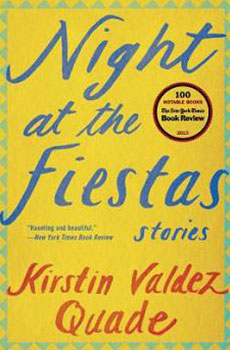 Three story collections that powerfully weave their own (very different) worlds:
Three story collections that powerfully weave their own (very different) worlds:
Night at the Fiestas, by Kirsten Valdez Quade, is an incredibly rich collection of stories set primarily in New Mexico, where many of the characters struggle to free themselves from the places and patterns they’ve been born into. Her stories are masterfully written, unafraid of exploring complex lives and complex themes.
The eerie "what if?" scenarios that Helen Phillips animates in Some Possible Solutions (a world in which people can learn the exact day they will die, or a woman convinced her children are really aliens, for example), are brought to life with Phillips’ unique blend of spooky conviction, pitch-perfect language, and emotional insight.
Nathan Ballingrud’s North American Lake Monsters is not for the faint of heart or faint of stomach: the monsters here, both human and supernatural, are not shadowy, maybe-they’re-all-in-the-character’s-head phenomena. Bursting into and out of mostly hardscrabble, Southern settings, they are real and ferocious and coming for you.
Geeta Kothari, Nonfiction Editor
 Both of my recommendations come from small presses. I found Kate Carroll de Gutes’ collection of essays, Objects in Mirror are Closer Than They Appear (Ovenbird Books), by chance at AWP in April and then read it compulsively on the flight back home. Beginning with the end of her marriage and working her way through her life in a reverse chronology, de Gutes writes about big questions like sexual identity and gender as well as more quotidian problems like the battle against hat head. I particularly appreciated her attention to detail, her wry sense of humor and her big heart. How could I resist a writer who declares, “I like to believe that I am a lesbian Woody Allen: nervous, neurotic and entirely urban”?
Both of my recommendations come from small presses. I found Kate Carroll de Gutes’ collection of essays, Objects in Mirror are Closer Than They Appear (Ovenbird Books), by chance at AWP in April and then read it compulsively on the flight back home. Beginning with the end of her marriage and working her way through her life in a reverse chronology, de Gutes writes about big questions like sexual identity and gender as well as more quotidian problems like the battle against hat head. I particularly appreciated her attention to detail, her wry sense of humor and her big heart. How could I resist a writer who declares, “I like to believe that I am a lesbian Woody Allen: nervous, neurotic and entirely urban”?
I love landscapes that include rock, ocean and trees, and landscape is exactly what drew me to Rachel May’s The Benedictines (Braddock Avenue Books). Set in Maine, this slim novel follows Annie James, an artist who teaches at a Benedictine boarding school. With its carefully crafted vignettes and fractured narrative, the novel’s tension builds slowly as Annie tries to navigate her way through the rules and limitations of the school while remaining true to herself. May’s beautiful sentences cast a spell on me, and though I promised to pass the novel on to a friend, I find myself unable to let it go.
Sergei Lobanov-Rostovsky, Associate Editor
 This summer I’ve thrown myself into a maelstrom, picking up this year’s winner of the PEN/E.O. Wilson Literary Science Writing Award, Thunder & Lightning: Weather Past, Present, Future by Laura Redniss. We have an interest in literary science writing here at KR, and this is a book that defies all expectations for writing about science. Redniss has been described as a “graphic biographer,” and she mixes whimsical illustrations with haunting prose in a font — Qaneq LR, from an Inuit word for falling snow — specially designed for
This summer I’ve thrown myself into a maelstrom, picking up this year’s winner of the PEN/E.O. Wilson Literary Science Writing Award, Thunder & Lightning: Weather Past, Present, Future by Laura Redniss. We have an interest in literary science writing here at KR, and this is a book that defies all expectations for writing about science. Redniss has been described as a “graphic biographer,” and she mixes whimsical illustrations with haunting prose in a font — Qaneq LR, from an Inuit word for falling snow — specially designed for
this book. Poetry flashes through the science, making Redniss’s descriptions of what it’s like to get lost in fog, or struck by lightning, both vivid and surreal. That combination of effects also defines the book of poems I’m most anticipating this summer — Solmaz Sharif’s Look, due out from Graywolf in July. Sharif’s poems force us to see what our language conceals, including the violence done to words themselves by our political discourse, the “night and fog” that we summon to hide from our own eyes the wounds we inflict. Check out the stunning title poem.
Kirsten Reach '08, Associate Editor
 Seven years after All the Living (FSG), C.E. Morgan has finally returned with a second novel just as carefully observed, but considerably longer and more ambitious than her first. The Sport of Kings spans 250 years of horseracing and the history of race in America, focusing on
Seven years after All the Living (FSG), C.E. Morgan has finally returned with a second novel just as carefully observed, but considerably longer and more ambitious than her first. The Sport of Kings spans 250 years of horseracing and the history of race in America, focusing on
a few generations of one family (and one unforgettable horse jockey). This is a big one: in a rave New Yorker review, Kathryn Schulz compared the novel to Jaimy Gordon’s Lord of Misrule, A Light in August and Moby-Dick.
In 1790, Xavier de Maistre was arrested for dueling and confined to his home for 42 days. What better way to fill his time than writing a travel guide? In Voyage Around My Room (New Directions), he announces that he has discovered an entirely new, and astoundingly affordable, form of travel—one that does not require anyone to leave the house in the first place. He writes almost exclusively in superlatives, and his mind jumps from music to art to literature with gusto.
A creepier suggestion: The Door by Magda Szabó (in an award-winning translation by Len Rix, published by NYRB) is getting a lot of attention from independent booksellers this year, and for good reason. I was hooked after three pages. The tension between the housekeeper, Emerence, and her employer is as complicated and compelling as the Patrick Melrose novels.
Janet McAdams, Editor at Large
During the teaching year, I compile a list of books to read once summer arrives. It’s always ridiculously long, enough books for a lifetime, and I end up reading a fraction before a certain poem or essay or novel makes me veer in a wildly different direction. That said, here are a few that have moved to the top of the list.
Alejandra Pizarnik’s Extracting the Stone of Madness, translated by Yvette Siegert. One of Argentina’s most influential poets, Pizarnik struggled with depression and committed suicide in 1972. Her poetry is charged with darkness, with themes of exile and suffering, and is formally brilliant.
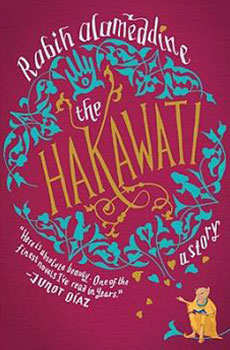 Rabih Alameddine’s The Hakawati. "Hakawati" means "storyteller" and Alameddine’s novel is rife with all kinds of stories. Its central character, Osama al-Kharrat returns to Lebanon from the U.S. when his father is ill. That return occasions what the book’s blurb calls "an Arabian Nights for this century." Two chapters in I’m finding the novel to be heartbreaking, hilarious and beautifully written.
Rabih Alameddine’s The Hakawati. "Hakawati" means "storyteller" and Alameddine’s novel is rife with all kinds of stories. Its central character, Osama al-Kharrat returns to Lebanon from the U.S. when his father is ill. That return occasions what the book’s blurb calls "an Arabian Nights for this century." Two chapters in I’m finding the novel to be heartbreaking, hilarious and beautifully written.
In his Concerning the Spiritual in Art, Wassily Kandinsky delineates what it is in and about art that moves us so. He "reads" particular artists, and he also theorizes more broadly about the ways that art is produced through and by particular historical moments. "The colors a painter smears onto a canvas can delight the eye, but they can also cause the viewer to receive vibrations that resonate within the soul."
Natalie Shapero, Editor at Large
 This summer is shaping up to be a scorcher, so remember to wear breathable fabrics, hydrate at regular intervals, and pair a lively explication of nefarious digital media institutions with a lacerating polemic against the primacy of the child. Lately, I’ve been reading Jaron Lanier’s Who Owns the Future? and Lee Edelman’s No Future. Don’t stop thinking about tomorrow!
This summer is shaping up to be a scorcher, so remember to wear breathable fabrics, hydrate at regular intervals, and pair a lively explication of nefarious digital media institutions with a lacerating polemic against the primacy of the child. Lately, I’ve been reading Jaron Lanier’s Who Owns the Future? and Lee Edelman’s No Future. Don’t stop thinking about tomorrow!
Or do!
G. C. Waldrep, Editor at Large
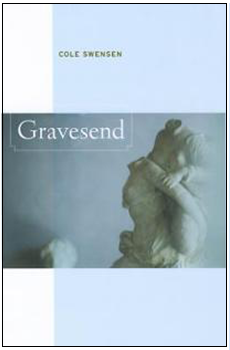 While I’ve admired many poetry collections over the past six months — including Robyn Schiff’s A Woman of Property, Shane McCrae’s The Animal Too Big to Kill, Robin Coste
While I’ve admired many poetry collections over the past six months — including Robyn Schiff’s A Woman of Property, Shane McCrae’s The Animal Too Big to Kill, Robin Coste
Lewis’s Voyage of the Sable Venus, and former KR book review editor Zach Savich’s The Orchard Green and Every Color — the two books I’ve most enjoyed this spring have been rereads: Cole Swensen’s Gravesend (surely her best book) and Eleni Sikelianos’s The Loving Detail of the Living & the Dead. Sikelianos combines a visionary faculty (of explicitly Blakean intensity) with the casual, not-quite-carefree demotic of the New York School, crystallizing into lines of almost unbearable lyric intensity: "The life fact shines like loving-oil all over the body," "Her fingers glitter with some animal time had wounded." If we blur the margin between the living and the dead, we could live there. Would we want to? These poems are brilliant dispatches from that tender, terrifying non-place.
Katharine Weber, Editor at Large
I have just finished reading Drew Gilpin Faust’s This Republic of Suffering: Death and the American Civil War. Though North and South together "reaped a harvest of death," the South bled the most; Confederate soldiers died at a rate three times greater than the men who fought for the Union. One in five white Southern men of military age did not survive the Civil War, and that bitter heritage remains for many a source of honor and pride. The Civil War ended slavery in this country, but the deeply divisive conflict over race and equality simmers on, and frequently bubbles to the surface in this election year.
 I was completely captured by Capture: Unraveling the Mystery of Mental Suffering by David A. Kessler, M.D., which offers a thrillingly original and new, unifying theory of how our minds work — how neural and psychodynamic mechanisms explain our impulses, obsessions and drives.
I was completely captured by Capture: Unraveling the Mystery of Mental Suffering by David A. Kessler, M.D., which offers a thrillingly original and new, unifying theory of how our minds work — how neural and psychodynamic mechanisms explain our impulses, obsessions and drives.
The British novelist Pat Barker is best known for her brilliant Regeneration Trilogy set during the First World War. Her "other" nearly as dazzling WW I trilogy, which began with Life Class and continued with Toby’s Room, now concludes with the publication of her beguiling new novel Noonday, which follows certain members of her cast of characters as they endure the London Blitz.
Adam Clay, Book Review Editor
I find myself in the summer months looking toward a large pile of poetry collections published before and during April each year. A book I found myself drawn to immediately was Susan Briante’s The Market Wonders, a book that seamlessly blends grief, domesticity, and the stock market. Trust me: this book is masterful at every turn: "the lesson of the nest is improvisation."
I’ve been waiting for Shannon Tate Jonas’s Battle Sleep for quite a while now — it’s a quiet collection in the tradition of Frank Stanford and James Wright: stark, surprising, and always beautiful. The title poem has haunted me for months.
 Finally, I read Mary Austin Speaker’s The Bridge recently on a train ride and found its movement forward to be hypnotizing. Speaker composed these poems while crossing the Manhattan Bridge on the subway (the time to cross was the time constraint to draft each poem). Her book is as much of an ode to the bridge as it is to the strangers accompanying her as she wrote it. The Bridge is a book to be read during the summer when you find yourself in transit, perhaps in the company of strangers.
Finally, I read Mary Austin Speaker’s The Bridge recently on a train ride and found its movement forward to be hypnotizing. Speaker composed these poems while crossing the Manhattan Bridge on the subway (the time to cross was the time constraint to draft each poem). Her book is as much of an ode to the bridge as it is to the strangers accompanying her as she wrote it. The Bridge is a book to be read during the summer when you find yourself in transit, perhaps in the company of strangers.
Anna Duke Reach, Director of Programs
Dog Medicine by Julie Barton. Can a dog save us from ourselves? In this memoir/manual Barton describes how canine companionship lifted her from depression and helped her find self-acceptance, forgiveness and friendship. Her honest prose steers clear of sentimentality for a deeply moving story.
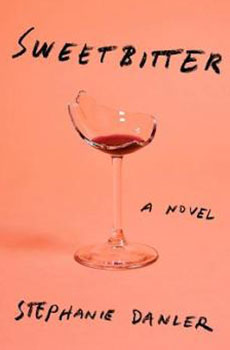 Sweetbitter by Stephanie Danler '06. You’ll become a "foodie" as Danler’s debut novel lures every reader into the romantic NYC restaurant world of oysters, chanterelles and champagne. The hard work of the servers is balanced by the hard play after hours. As the chef yells from the kitchen, this is a book you should “pick up” this summer.
Sweetbitter by Stephanie Danler '06. You’ll become a "foodie" as Danler’s debut novel lures every reader into the romantic NYC restaurant world of oysters, chanterelles and champagne. The hard work of the servers is balanced by the hard play after hours. As the chef yells from the kitchen, this is a book you should “pick up” this summer.
Studies in the Hereafter by Sean Bernard. The afterlife is filled with flying people, vegan angels and time traveling bureaucrats in a whimsical love story that is funny, philosophical and wildly imaginative.
Jamie Lyn Smith, Consulting Editor
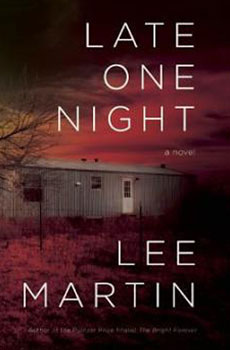 In Late One Night, Lee Martin crafts a graceful and nuanced story of heartbreak, guilt, and reckoning driven by a small town’s quest for justice after an arson fire claims a man’s
In Late One Night, Lee Martin crafts a graceful and nuanced story of heartbreak, guilt, and reckoning driven by a small town’s quest for justice after an arson fire claims a man’s
estranged wife and three children. Martin’s brilliant characterization and command of language captivate the reader as the story unfolds, revealing lives worn thin by imperfect, desperate acts of love and survival.
I’ve just read Kenneth Logan’s (Kenyon ’96) YA novel True Letters From a Fictional Life about a young boy in Vermont coming to terms with his homosexuality. Logan’s command of language and storytelling is exceptionally engaging, and the book’s wit and humor make this epistolary novel a great read. I loved it.
Maggie Smith, Consulting Editor
 I’m looking forward to spending the summer working my way through my impressive poetry haul from this year’s AWP book fair, including Hadara Bar-Nadav’s Fountain and Furnace, Rebecca Morgan Frank’s The Spokes of Venus, Ocean Vuong’s Night Sky with Exit Wounds,
I’m looking forward to spending the summer working my way through my impressive poetry haul from this year’s AWP book fair, including Hadara Bar-Nadav’s Fountain and Furnace, Rebecca Morgan Frank’s The Spokes of Venus, Ocean Vuong’s Night Sky with Exit Wounds,
and Lisa Olstein’s Little Stranger. And forget the typical "beach read:" Solmaz Sharif’s first book, Look, is due out from Graywolf this July, and it’ll be coming with me on vacation.